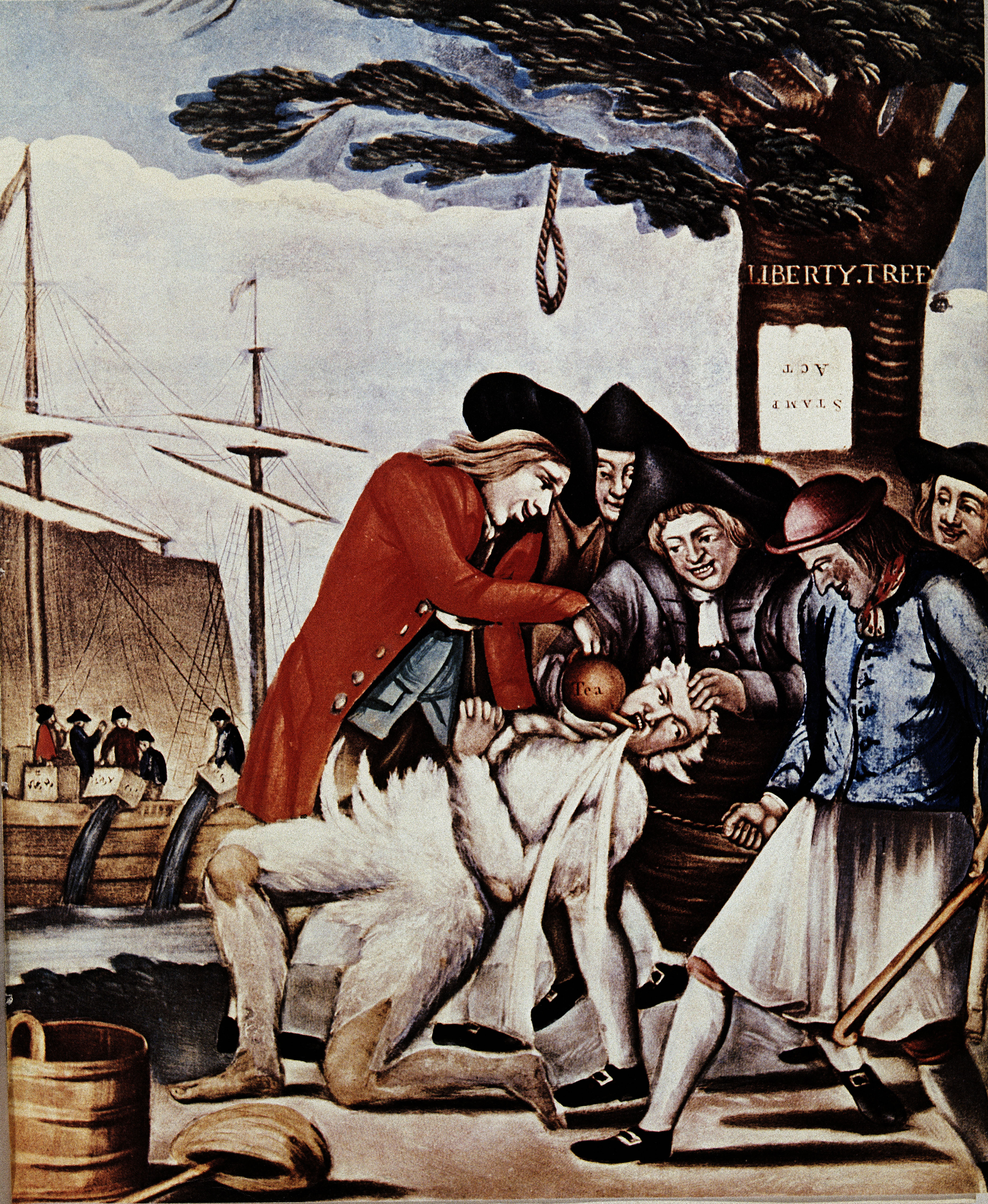Exploring the Text
Printed Pages 371-372- In The Able Doctor, sticking out of Lord North’s pocket we see the Boston Port Bill, a bill that would close Boston Harbor in response to the Boston Tea Party. A month after the cartoon appeared in England, Paul Revere copied the engraving for the Royal American Magazine. The only change he made was to add the word “TEA” to the pot held by the prime minister. Why would Revere make such a change?
Question
Exploring the Text: - In The Able Doctor, sticking out of Lord North’s pocket we see the Boston Port Bill, a bill that would close Boston Harbor in response to the Boston Tea Party. A month after the cartoon appeared in England, Paul Revere copied the engraving for the Royal American Magazine. The only change he made was to add the word “TEA” to the pot held by the prime minister. Why would Revere make such a change? - Each of the figures in Revere’s engraving may be regarded as allegorical. Look carefully at the central figures: Brittania, Prime Minister North, Chief Justice Mansfield, Lord of the Admiralty Sandwich, and “America.” How are they depicted? What are they doing? What do their actions suggest?
Question
Exploring the Text: - Each of the figures in Revere’s engraving may be regarded as allegorical. Look carefully at the central figures: Brittania, Prime Minister North, Chief Justice Mansfield, Lord of the Admiralty Sandwich, and “America.” How are they depicted? What are they doing? What do their actions suggest? - What is the attitude of the original artist (and of Paul Revere) toward the subject of the cartoon? How does the cartoon make you feel? What was the likely reaction of the colonists who saw it in 1774?
Question
Exploring the Text: - What is the attitude of the original artist (and of Paul Revere) toward the subject of the cartoon? How does the cartoon make you feel? What was the likely reaction of the colonists who saw it in 1774? - The image below is a 1774 British engraving entitled The Bostonians Paying the Excise-Man, or Tarring and Feathering, which depicts colonists punishing Boston commissioner of customs John Malcolm, the collector of tea taxes. The Boston Tea Party is visible in the background. Notice other details. For example, what does the noose hanging from the “Liberty Tree” suggest? Why is the sign on the tree upside down? Why are the colonists pouring a pot of tea into the mouth of the tarred and feathered central figure? Notice the similarities between this engraving and Paul Revere’s The Able Doctor. How are they visually alike? How do they differ? How would you describe the difference in perspective of each?
 Album/Art Resource, NY
Album/Art Resource, NYQuestion
Exploring the Text: - The image below is a 1774 British engraving entitled The Bostonians Paying the Excise-Man, or Tarring and Feathering, which depicts colonists punishing Boston commissioner of customs John Malcolm, the collector of tea taxes. The Boston Tea Party is visible in the background. Notice other details. For example, what does the noose hanging from the “Liberty Tree” suggest? Why is the sign on the tree upside down? Why are the colonists pouring a pot of tea into the mouth of the tarred and feathered central figure? Notice the similarities between this engraving and Paul Revere’s The Able Doctor. How are they visually alike? How do they differ? How would you describe the difference in perspective of each?